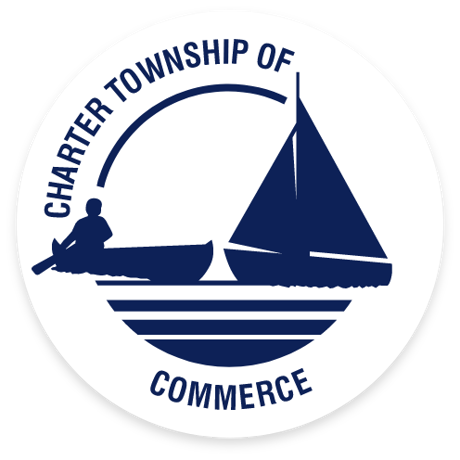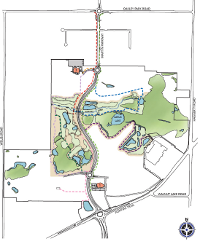Thank you for visiting the Commerce DDA Web page. The primary goal and objective of the DDA is to promote the long-term economic health and stability of the Township. Our mission is to improve the long-term economic environment and overall vitality of our community for both the citizens and businesses in the area. If you need more information please contact the DDA at dda@commercetwp.com or call 248-960-7025. Also please take time to communicate to us your concerns and feedback.
Regular Meetings are held on the 3rd Tuesday of each month at 12:00 Noon
Board Members
Debbie Watson, Director
dwatson@commercetwp.com
Members:
Steve Matta, Chairperson
Tim Hoy, Vice Chairperson
Brian Winkler
Jose A. Mirkin
David P. Smith
Derek Tuck
Spencer Schafer
Susan Spelker
Larry Gray – Township Supervisor
Molly Phillips, Treasurer
Melissa Creech, Secretary
Meetings Located at: 2009 Township Drive, Commerce Township, MI 48390
Commerce Towne Place DDA Area Walking Trails DDA Area Map
In 1975, the Michigan Legislature created Act 197, which allows communities to establish a Downtown Development Authority. According to the Act, the purpose of a DDA includes:
- Correcting and preventing deterioration in business districts.
- Encouraging historic preservation.
- Authorizing the creation and implementation of development plans in the districts.
- Promoting the economic growth of the districts.
- Creating a Downtown Development Authority Board.
- DDAs may raise revenue for physical improvements through several methods, including: tax increment financing, issuing revenue bonds, tax levy, and grants.
The primary goal of the Commerce Township Downtown Development Authority is to promote and preserve the economic health and stability of the Township.
The DDA board meetings are open to the public. They are held the third Tuesday of every month at noon in the town hall, 2009 Township Drive.
In 2007, the first step in a huge transportation project to dramatically improve the environment, traffic and property values within Commerce Township began with the upgrade from M-5 to Welch Road on Pontiac Trail which was widened to five lanes to better accommodate traffic flow. A few months later in 2008, construction of Martin Parkway began near M-5 at Pontiac Trail. In 2011 the roundabout at Pontiac Trail and Martin Parkway opened. The extension and roundabout has helped to alleviate traffic congestion on Welch Road and Pontiac Trail.
The development of the area located at the former Links of Pinewood and El Dorado golf courses began in 2008 with the construction of the Martin Road extension. Part of that construction includes the preservation of more than 500 trees, which have been temporarily removed from the property and housed in a nursery until the completion of Martin Parkway, when they will be returned to permanent homes on the property.
Over 125 acres of the Martin Parkway Project will be in an open space park-like setting with six miles of paths, trails, a small lake, ponds, and other amenities in addition to restored wetlands, bridges, and an environment ideal for outdoor recreation.
In 2004, in order to construct Martin Parkway from Oakley Park Road to M-5, the DDA purchased two golf courses and fifty acres of Huron Clinton Metropolitan land, totaling 350 acres located in the area north of M-5 between Welch and Haggerty Roads. The land was purchased to provide relief from traffic congestion at M-5 and Pontiac Trail, while providing the opportunity for a new library, town hall, and town center identity for the community.
Plans for the project include the restoration of many wetlands on the property as well as daylighting Glengary Creek to a more original state. Because much of the Glengary Creek floodplain is golf courses built on former wetlands, more than twelve acres of wetlands have been created or restored as part of the open space plan. This also provides a wildlife habitat for many critters. The DDA has retained many of the natural features of the land including trees and hills.
The DDA was responsible for developing Robert H. Long Park on 14 Mile Road near Welch Road. In addition, providing funding for the acquisition of a large portion of the Dodge V Township Park, the DDA also provided nearly fifty acres of township park land between Welch and South Commerce Roads. Over all, the DDA has been responsible for providing over 350 acres of open space and parkland for Commerce residents in perpetuity.
The 330 acres in the project area lend themselves to a wide range of uses. Anything from single family residential to retail and/or a corporate campus would be suitable uses. The area is currently being marketed by Insite Commercial. For more information, please visit the website: www.commercetowneplace.com.
The first step is to relieve traffic congestion so that citizens can reach their homes in time and enjoy being there. The second step is to create a unique center featuring uses and amenities that are missing in the community.
The purpose of a DDA is to become involved in economic issues. In 1975, the Michigan Legislature created Act 197, which allows communities to establish a Downtown Development Authority. According to the Act, the purpose of a DDA includes: correcting and preventing deterioration in business districts; encouraging historic preservation: authorizing the creation and implementation of development plans in the districts; and promoting the economic growth of the districts. Both the El Dorado and Links at Pinewood golf courses were on the public market for sale when the DDA purchased them in 2004. The purchase presented a valuable opportunity for the DDA to more effectively fulfill the purposes mentioned above. All business is conducted for the growth and betterment of the community.
Roundabouts are a common form of intersection control used mostly in Europe and Australia. There are currently only a few hundred in use in the U.S. Some locations include: Vail, CO, Clearwater Beach, FL, Salt Lake City, Utah and Charlotte, NC. These roundabouts have resulted in improved safety, shorter delays, increased capacity, and improved aesthetics. Roundabouts generally create a reduction in the number and severity of accidents. This is because roundabouts require drivers to reduce their speed during the approach, entry, and movement within the roundabout. With typical intersections, many drivers are encouraged by a green or yellow light to accelerate in order to cross the intersection. The Pontiac Trail roundabout was designed to make a distinction between M-5 and Martin Road and will require drivers who are entering Martin Road from M-5 to slow down.



